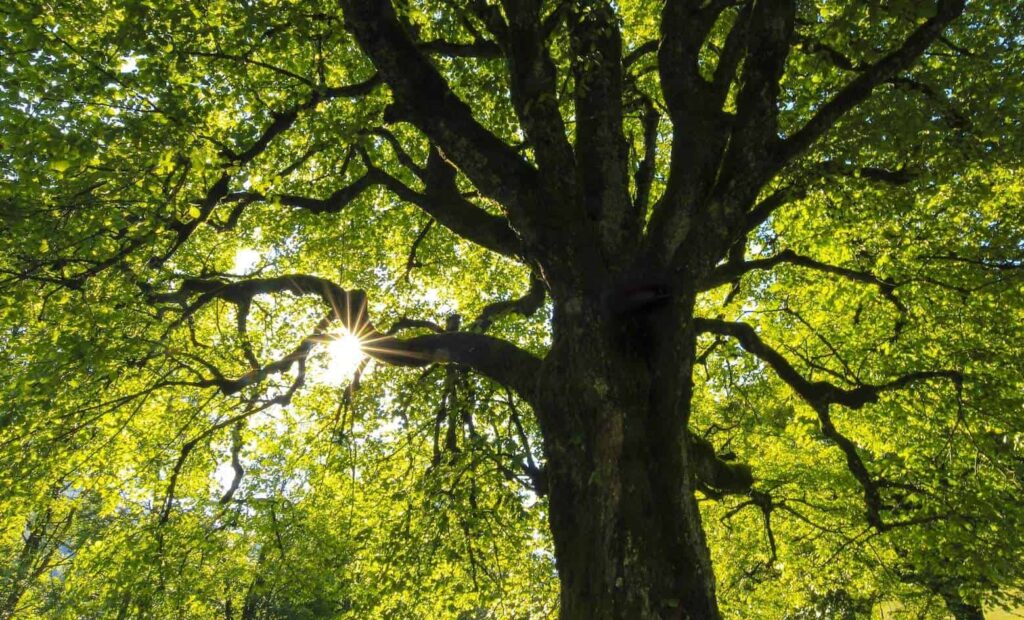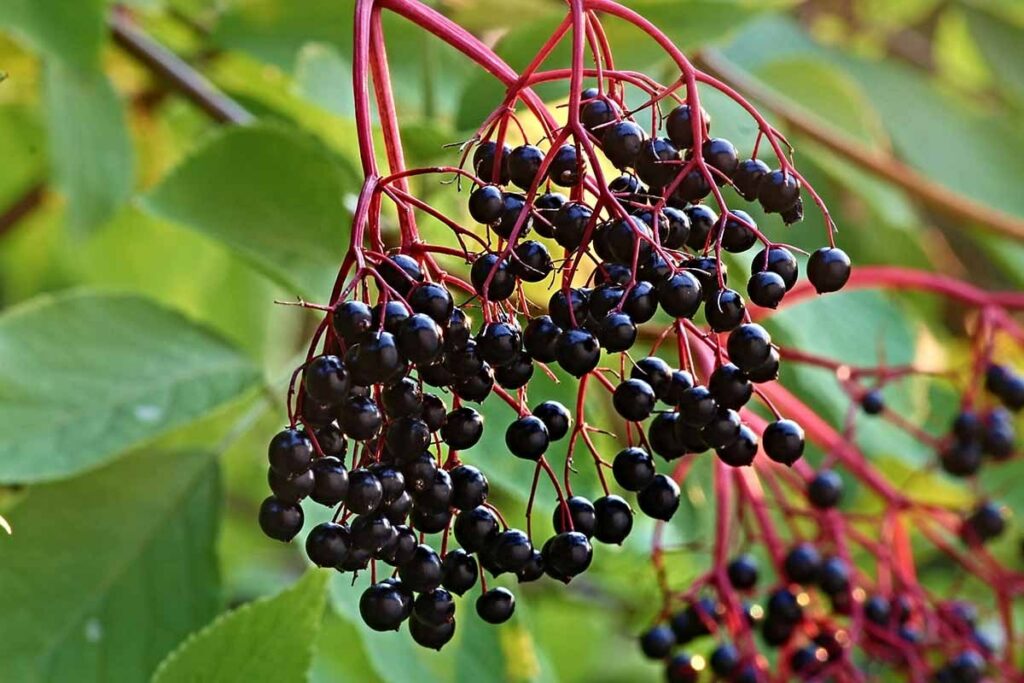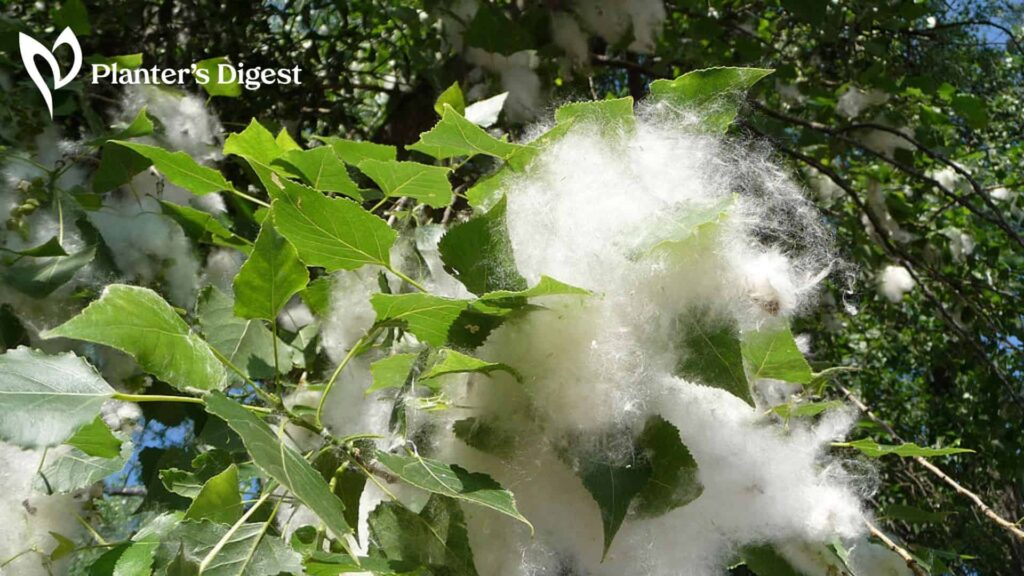
While their height makes them a great source of shade, especially in the summertime, cottonwood trees can easily become a nuisance when not properly maintained.
Their thick roots and large canopy are infamous for causing trouble with power lines, sidewalks, and similar structures for many homeowners.
If you’re in the same boat, we’ve got a couple of the best ways to kill cottonwood trees in this article. These methods are accompanied by easy-to-follow instructions, to boot!
How to Kill Cottonwood Trees
The best way to kill cottonwood trees is to treat the roots with a glyphosate or triclopyr-based herbicide. These formulations are highly effective, fast-acting, and inhibit the growth of any new suckers.
As a result, you can effectively kill the cottonwood tree without worrying about it growing more suckers to propagate from.
Ways to Kill Cottonwood Trees
Unsure of which way to kill your cottonwood trees? Read on as we comprehensively explain how to do each method along with their difficulty levels and duration.
Before anything else, be sure to put on appropriate safety gear. This includes face protection such as a mask or goggles along with suitable clothing, especially when handling chemicals.
1. Using Bare-ground Herbicides

| Difficulty | Very Easy ●○○○○ |
| Speed | Slow-acting |
| Things You Need | Personal protective equipmentHerbicide |
This method entails sprinkling a generous amount of herbicide onto the soil that surrounds the tree, adding more layers in lines that are about 2 to 4 feet apart.
Over time, the herbicide will make its way further into the soil until it’s been thoroughly absorbed by the tree.
This method is great for homeowners who hate eyesore tree removal methods. With this, you don’t have to worry about anything poking out, so you’re left with a beautiful landscape, until, er, the tree dies.
Apart from that, this technique is also popular among those who don’t mind a slow-acting solution to killing their cottonwood tree. If you’re not one for manual labor and don’t mind keeping your tree for a bit longer, then this is your best bet.
In addition, banding is great for when you’re severely outnumbered by the cottonwood trees on your property. Since you’re dousing the soil with several layers of herbicide, nearby cottonwood trees are bound to be affected.
Having mentioned that, it’s important to use a selective herbicide to prevent damaging plants within the perimeter of the tree you want to kill.
It’s also worth highlighting that this method can potentially cause your soil to become infertile as the active agents in the herbicides can remain in the soil for a long time.
This is because the soil could run off to nearby bodies of water or even to your neighbor’s property. Hence, this method is best done in deserted and non-vegetated areas such as parking spaces and roadways.
| How To Do Apply your herbicide of choice directly onto the soil where the tree that you want to kill is planted. For extra measure, add more layers in lines that are about 2 to 4 feet apart. Be cautious of surrounding plants that you don’t want to be affected by the herbicide. Pay close attention to signs that your tree is deteriorating. These include:Discolored leaves (typically yellow or brown)Wilted, distorted, or curled foliageHalted growthSagged branches After your cottonwood tree has died, you can either remove it yourself or have a professional arborist get the job done. |
2. Girdling or Ring Barking

| Difficulty | Hard ●●●●○ |
| Speed | Slow-acting |
| Things You Need | Personal protective equipmentSharp carving tools such as a chisel, ax, hatchet, or chainsawGlyphosate or triclopyr-based herbicideDye (optional) |
Off the bat, it’s important to note that girdling or ring barking is one of the most tedious methods of killing a cottonwood tree.
This is because you’ll need to carefully strip away several layers of the tree, around ¾” deep, in a full ring using a sharp tool such as an ax.
It’s also worth considering that this method will be 10 times harder if you’ve got a large, thick, mature tree on your property. If you’ve got, like, 20 of them, then you’re better off with another method.
Nevertheless, this method’s highly effective if executed properly. Stripping away a few layers of the tree’s bark removes parts that are essential for transporting food and nutrients.
Having said that, your cuts should be deep enough to remove the following layers:
- Bark, which is the outermost layer of the tree that’s responsible for protecting it from losing moisture, warding off heat, and insulating.
- Cambium, which is the cell layer right after the bark, in charge of making new wood.
- Xylem, which is responsible for the transportation of water from the roots to the leaves.
- Phloem, which is in charge of the transportation of nutrients from the leaves to the roots.
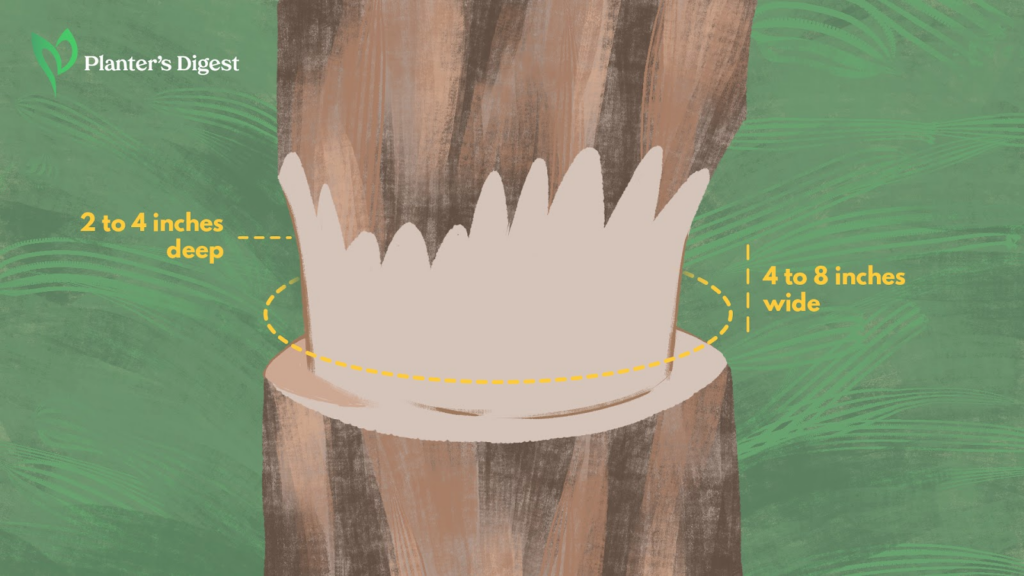
It’s vital that these layers are deep and wide enough to effectively inhibit the tree’s transport system and ability to process food.
To be specific, your slashes should be about 2 to 4 inches deep and 4 to 8 inches wide. They’re also supposed to go around the entire circumference of the tree’s trunk.
To boost effectiveness, you can create several girdles that are just a few inches apart from one another. Other than that, you can also girdle your cottonwood tree’s surface roots and branches.
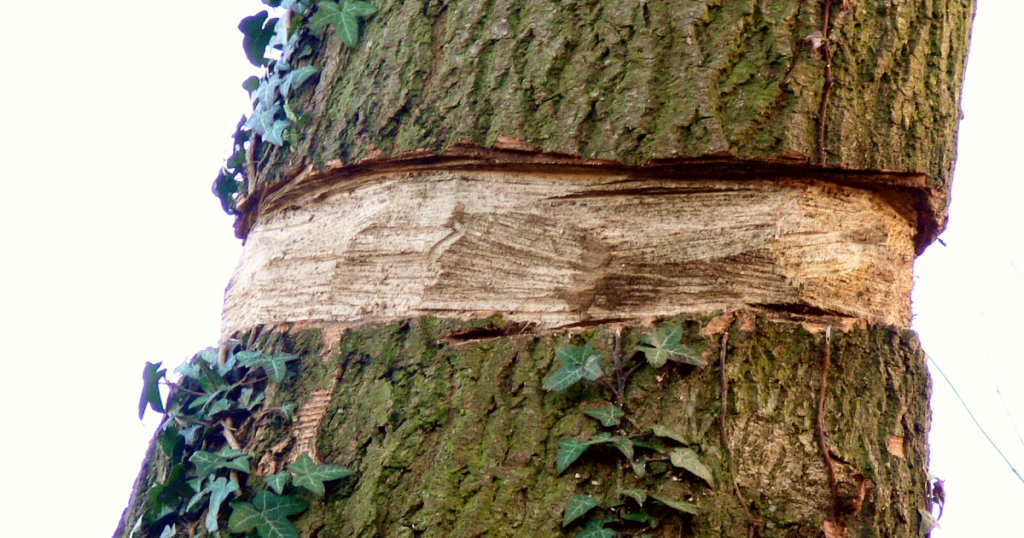
Despite being a rather slow-acting method, you can add a liberal coat of glyphosate or triclopyr-based herbicide onto the newly stripped stem. This will help speed up the decaying process.
Even then, how long the deterioration process will be will depend on how mature your tree is. It’ll also vary on whether or not your cuts were deep enough to hinder the transportation process.
If you did this technique correctly, you can give yourself a pat on the back and expect your tree to begin to show initial signs of decay within 24 to 48 hours.
Otherwise, you’ll, unfortunately, have to redo the ring barking, making sure that they’re deeper this time around. For extra measure, apply your herbicide immediately on the fresh cut.
| How To Do Put together your glyphosate or triclopyr-based herbicide exactly according to the instructions. To help you better identify which areas have already been treated, add dye to your herbicide mixture. Using a sharp carving tool, begin by removing small chunks of the cottonwood tree’s bark. At this point, you don’t need to focus too much on whether it’s straight. Instead, focus on carefully getting a sizeable chunk removed to make stripping the layers easier. Once you’ve gotten the hang of it, then you can focus on making your cuts about 2 to 4 inches deep and 4 to 8 inches wide. Make sure that your ring bark encircles the entire circumference of the tree’s trunk. Continue to make more ring barks around the base of the tree, branches, and surface roots. Immediately apply a generous amount of herbicide directly onto the fresh cuts. Keep an eye out for signs that the tree is dying. Here are a few signs to watch out for:Discolored leaves (typically yellow or brown)Wilted, distorted, or curled foliageHalted growthSagged branches If your tree hasn’t shown any signs of deterioration, redo the cuts and reapply herbicide. Once your cottonwood tree has died, you can either remove it yourself or call on a certified arborist. |
3. Cutting the Shoots and Suckers

| Difficulty | Hard ●●●●○ |
| Speed | Fast-acting |
| Things You Need | Personal protective equipmentSharp digging tools such as a spade or shovelHatchet or ax2,4-D, glyphosate, or triclopyrDye (optional) |
It’s worth highlighting that this method, while quite laborious, is actually one of the most effective.
This is because even if you’ve taken down a cottonwood tree, it will do its best to survive. It’ll grow suckers from roots that are left behind in the soil and from there, it’ll propagate and grow into a new tree.
As a result, this method helps prevent regrowth which definitely plays a big role in helping alleviate future issues with unwanted cottonwood trees on your property.
However, you’ll first need to cut down your cottonwood tree until you’ve got just a stump. Afterward, you can either use a power drill to create several deep holes or an ax or hatchet to create cuts along the roots.
Then, apply a generous amount of chemical herbicides, preferably those specifically for broadleaf weeds such as 2,4-D, glyphosate, or triclopyr.
While this step is completely optional, it’ll help you easily recognize areas that you’ve already applied the herbicide if you mix a dye into your solution.
This is great for when you’ve got a lot of trees to work on and can easily lose track of which trees have already been done.
To help you easily recognize areas that you’ve already applied herbicide to, you can mix a dye into your solution. Though this step is completely optional.
Using a strong chemical herbicide will help kill a majority of the remaining roots without you having to turn your yard upside down to dig every piece out.
After soaking these roots for a couple of days, you can then remove them manually using a long, sharp spade or shovel.
If you’ve got a lot of nearby plants that could be affected by the herbicide, it’s best to go the non-chemical route and simply remove the roots and suckers manually.
| How To Do Cut your cottonwood tree down until it’s merely a stump. Using a shovel, dig out the soil at the base of your stump to expose as much of the root system as possible. If the soil’s dry, pour water to help loosen up the soil. Continue to remove as much of the soil as possible. Then, create several incisions on the exposed roots using a hatchet or ax. Alternatively, you can create several deep holes using a power drill. Be sure to create these incisions or holes at an angle so that they can hold the herbicide that you’re applying. Cover the holes or cuts with a generous amount of a strong chemical herbicide such as 2,4-D, glyphosate, or triclopyr. Leave it alone for the next 2 to 3 days to allow the roots to thoroughly absorb the herbicide. Afterward, use pruning shears to clip the roots. As for the suckers, manually remove them with your hands to ensure that they come out in one piece. Keep a close eye on the perimeter to ensure that there aren’t any suckers that you accidentally missed. |
4. Applying Foliar Spray

| Difficulty | Easy ●●○○○ |
| Speed | Fast-acting |
| Things You Need | Personal protective equipmentBackpack sprayer or spray bottleGlyphosate or triclopyr-based herbicideDye (optional) |
The foliar spray method is great for when you have several reasonably-sized cottonwood trees that you’d want to get rid of with minimal effort.
As its name suggests, it involves spraying the foliage of the unwanted tree with either a glyphosate or triclopyr-based herbicide.
When choosing which to use, keep in mind that glyphosate is a non-selective herbicide which means that it will show no mercy and damage any plant that it comes into contact with.
Meanwhile, triclopyr is a selective herbicide that’s only effective on woody and broadleaf plants. So if you’ve got grasses or types of plantation crops, then you’re better of with triclopyr.
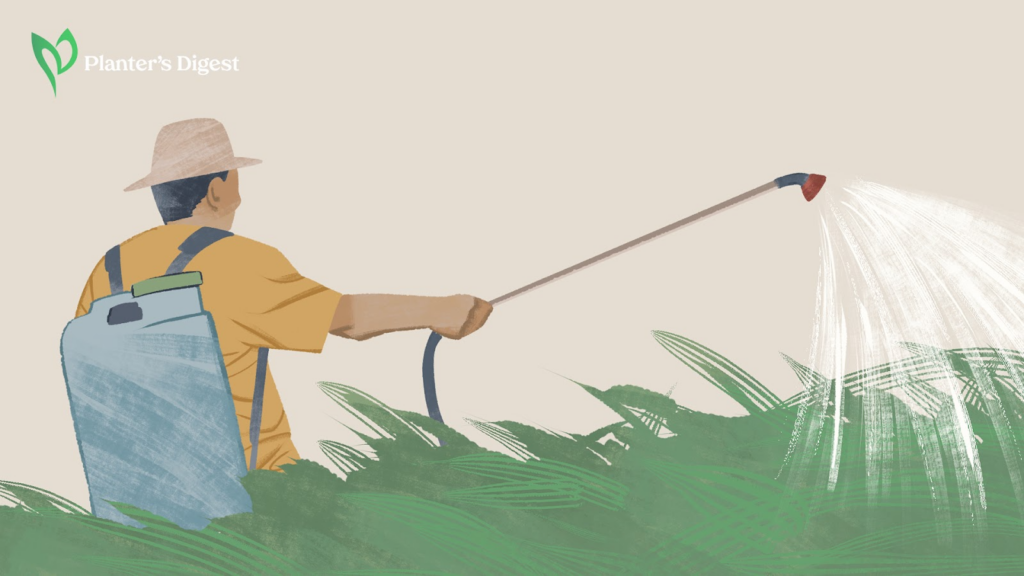
The key to successfully performing this method is to ensure that you’re doing it on a clear and sunny day. This is because the wind will simply blow away your herbicide and the rain will wash it off.
Applying herbicide on dry foliage will also help it adhere better to the surface, resulting in better absorption.
Hence, be sure to double-check what the weather will be like to save yourself from having to redo the entire process.
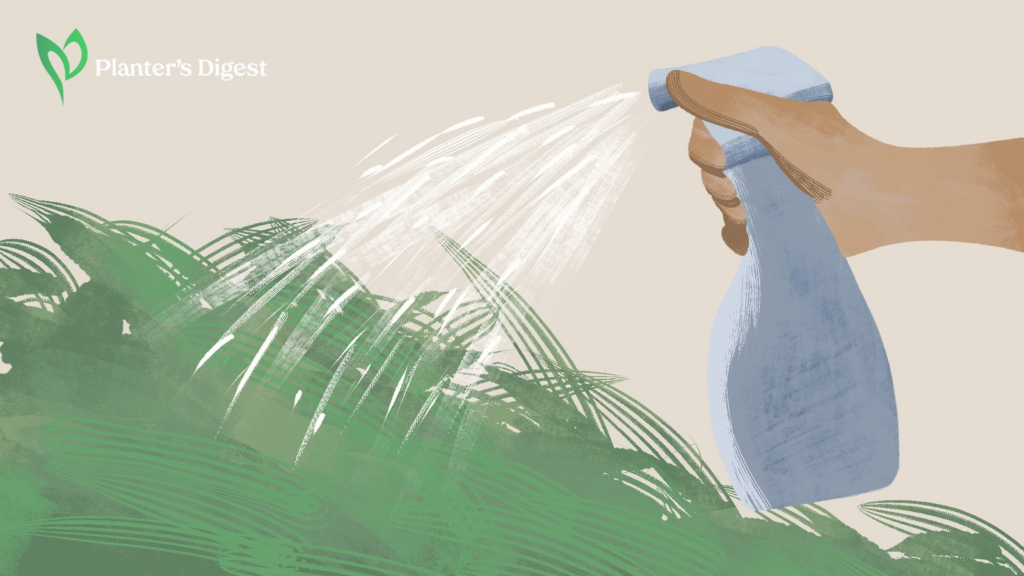
Even then, there may be cases where you’ll need to do multiple applications. This is either because you didn’t coat enough foliage on your initial application or your herbicide wasn’t strong enough.
More often than not, large and mature trees typically need a herbicide with a higher concentration of its active ingredient to be effective.
Nevertheless, the foliar spray method yields great results when done properly.
| How To Do Prepare your glyphosate or triclopyr-based herbicide according to the instructions. For easier application, you can use a backpack sprayer rather than a manual sprayer. On top of that, you can mix dye into your herbicide solution to be able to tell which trees have already been coated. Disperse an even coat of your herbicide onto the leaves of your cottonwood tree starting from the top of the canopy, going from left to right, and slowly making your way down. Applying this way reduces wastage as the excess herbicide simply falls onto the leaves below. Be wary of how much you’re applying as you don’t want your leaves soaking and dripping in herbicide as this will inhibit proper absorption. After, expect your tree to begin showing signs of deterioration. Here are a few signs to watch out for:Discolored leaves (typically yellow or brown)Wilted, distorted, or curled foliageHalted growthSagged branches In the event that your tree appears unaffected, you may need to reapply the herbicide. Otherwise, you might need to raise the concentration levels of your solution. Once your cottonwood tree has died, you can either remove it yourself or call on a certified arborist. |
5. Injecting the Tree with Herbicide

| Difficulty | Moderate ●●●○○ |
| Speed | Fast-acting |
| Things You Need | Personal protective equipmentTree injector or power drillGlyphosate or triclopyr-based herbicideHeavy-duty plastic |
Injecting the tree with herbicide is another effective technique for killing it without too much work.
You can perform this using either a tree injector, which is a relatively inexpensive option, or using a power drill, if you already have one on hand, to puncture several holes into the stem.
For the best results, you’ll need to place several injections or make a couple of holes all around the circumference of the tree. These need to be around 2 to 6 inches apart from one another.
If you’re using an injection, all you need to do is choose which places you’ll be administering the herbicide to.
If you made holes with a power drill, simply pour the herbicide directly into the hole. Then, cover it with heavy-duty plastic to protect it from getting diluted by the rain.
| How To Do Begin by plotting out the places where you’ll be injecting or creating the holes. For extra measure, you can create several marks across the circumference of the tree that are about 2 to 6 inches apart from one another. If you’ll be drilling holes, make them 8 to 10 inches deep. This is because you want the herbicide to be directly absorbed by the inner layers of your tree. After preparing, you can then inject or pour the herbicide. Cover any exposed holes with heavy-duty plastic to prevent it from getting diluted by the rain. After a few days, pay attention to any signs of deterioration. Here are a few signs to watch out for:Discolored leaves (typically yellow or brown)Wilted, distorted, or curled foliageHalted growthSagged branches In case your tree doesn’t show any signs of damage, you may need to redo the entire process. If your tree doesn’t seem injured in any way, this could mean that it hasn’t properly absorbed the herbicide. Alternatively, you may need to use a stronger herbicide with a higher concentration. After your cottonwood tree has died, you can either remove it yourself or call on a certified arborist. |
6. Cutting It Down and Grinding the Stump
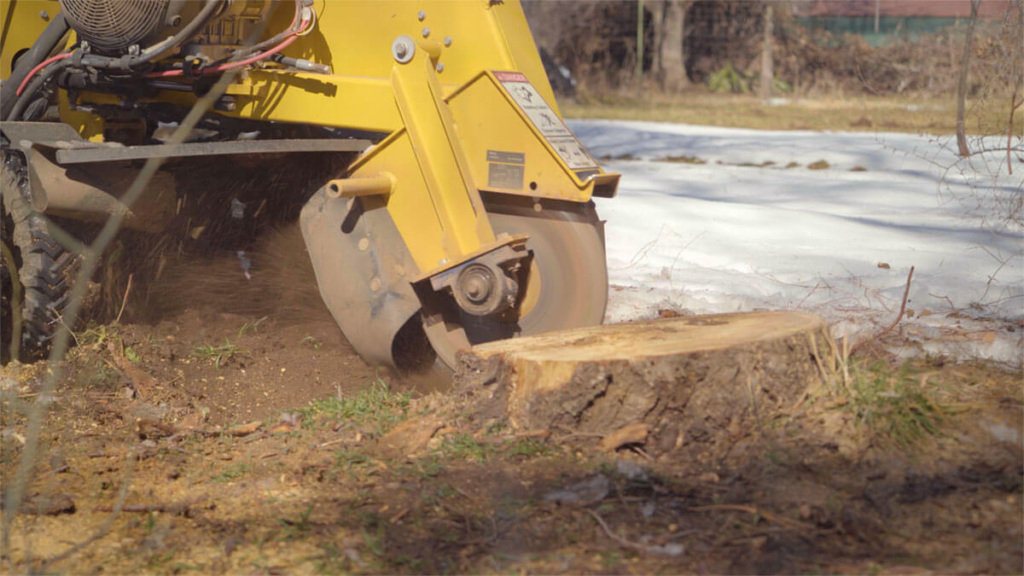
| Difficulty | Easy – Moderate ●●●○○ |
| Speed | Fast-acting |
| Things You Need | Personal protective equipmentGrinderShovelPruning shearsChainsaw |
Cutting the tree down and grinding it may be the most efficient method of killing your cottonwood. This is simply because you’re tearing it down from the leaves to the roots.
You’ll essentially be cutting the tree into smaller chunks and feeding it into a grinder that’ll cut it into even tinier pieces.
Hence, this method is great for large and established cottonwood trees that won’t budge even with the strongest herbicide solution in the market.
In some hardware stores, they rent out grinding equipment for a reasonable price. However, this task isn’t for the weak and will require a lot of elbow grease to accomplish.
Even so, most don’t rent out heavy-duty tools that most professionals use. We also don’t like the sound of untrained gardeners using equipment they’ve never even seen or heard of before.
So don’t mind shelling out a bit of money to have it done for you, it may be a better call to hire a certified arborist to do the job.
Having a pro do it eliminates all the stress for you as they know the right techniques to get rid of cottonwood trees of various shapes, sizes, and hardiness.
| How To Do Begin by cutting away the foliage of the tree using pruning shears. Then, move on to removing the branches using a chainsaw. Don’t attempt to remove long branches with a single cut. Instead, remove them chunk by chunk to avoid any accidents. From the end of the branch, measure a couple of feet to the stem. Once you’ve plotted where you’ll cut, start by making an incision from the top of the branch to the middle. Then, make another incision from the bottom of the branch to the middle. This technique lessens the chances of your chainsaw getting stuck in between a thick branch. Once you’ve only got the stem left, cut the tree down. Afterwards, clear the nearby soil of any plants, rocks, and similar obstructions. Next, use a shovel or spade to dig out the stump. You’ll want to remove as much of the soil as possible to get a clean and open view of the roots. If the soil is dry and difficult to work with, you can add a bit of water to help loosen it up. After you’ve gotten most of whatever’s left of the tree exposed, it’s time to grind the stump and roots. Fill the hole back in with the soil that you just removed along with some loam soil and sawdust. |
7. Hacking the Stem and Applying Herbicide

This method is also often referred to as the hack and squirt technique or cut surface treatment.
It’s similar to the method that involves injecting the tree with herbicide as it essentially requires a deep cut into the stem of the tree and then applying a good amount of herbicide onto it.
While this technique is normally done by making an angled cut with a hatchet or ax, it’s more effective to drill several holes.
This is because drilling creates holes that are deeper than incisions made by a hatchet or ax. As a result, the herbicide can travel deeper into the innermost layers of the tree.
For optimal results, this method is best done when the weather is clear and sunny. You’ll want to check the forecast as rain or wind can compromise the effectiveness.
To prevent dilution, you can use heavy-duty plastic to protect the holes from rain.
Even so, this method is quite tedious as you’ll have to refill the holes with herbicide, continuously feeding the tree poison until it begins to show signs of deterioration.
| How To Do Prepare your herbicide as directed by the label. Using a hatchet or ax, create a 45-degree cut. If you’re using a power drill, create holes that are about 2 to 7 inches deep and slanted downwards. The angle is important as the cuts or holes need to be able to hold the herbicide long enough for the tree to absorb it completely. When adding more cuts or holes, make them at least 2 inches apart from one another. For extra measure, you can make cuts or holes on any of the cottonwood tree’s surface roots, too. Apply a generous amount of herbicide onto the cut or into the hole. Using heavy-duty plastic, cover the cut or hole to protect it from the wind or rain. Leave the cut or hole for a few days then check on it to see whether the tree has absorbed the herbicide. Reapply the herbicide until your tree begins to show signs of deterioration. Pay attention to these:Discolored leaves (typically yellow or brown)Wilted, distorted, or curled foliageHalted growthSagged branches In case your tree doesn’t show any signs of damage, you may need to redo the entire process. If your tree doesn’t seem injured in any way, this could mean that it hasn’t properly absorbed the herbicide. Alternatively, you may need to use a stronger herbicide with a higher concentration. When your cottonwood tree has died, it’s time to completely remove it. You can either get rid of it yourself or hire a professional arborist. |
FAQs on Cottonwood Trees
Cottonwood trees gain about 6 feet in height annually, making them one of the fastest-growing species in North America. They’re known to grow to over 100 feet tall with large roots and a wide canopy.
Cottonwood trees are hard to kill because their roots stay active, growing suckers that’ll propagate into new trees. Hence, you need to cut the suckers to effectively kill and remove all traces of the cottonwood tree from your property.
The best herbicides to use on cottonwood trees are glyphosate or triclopyr because they can kill the roots quickly, which helps prevent the growth of new suckers.
The average lifespan of a cottonwood tree is usually anywhere from 70 to 100 years old. Though in the right growing conditions, they can live up to around 200 to 400 years.



